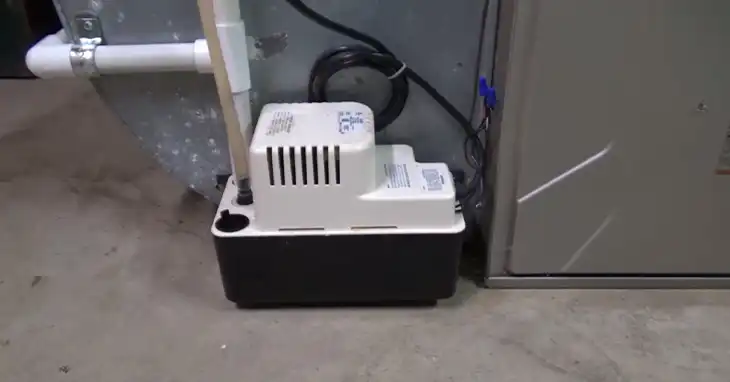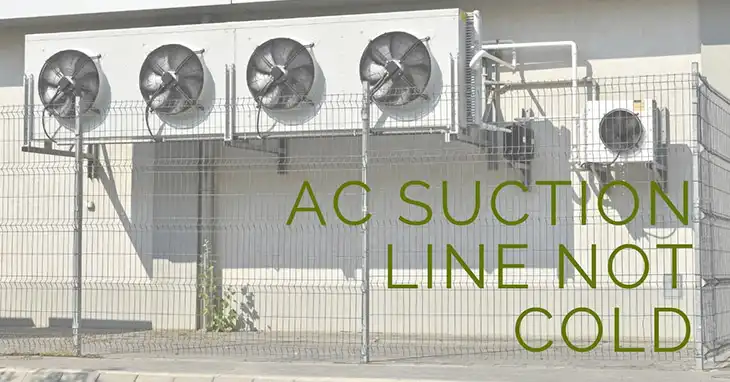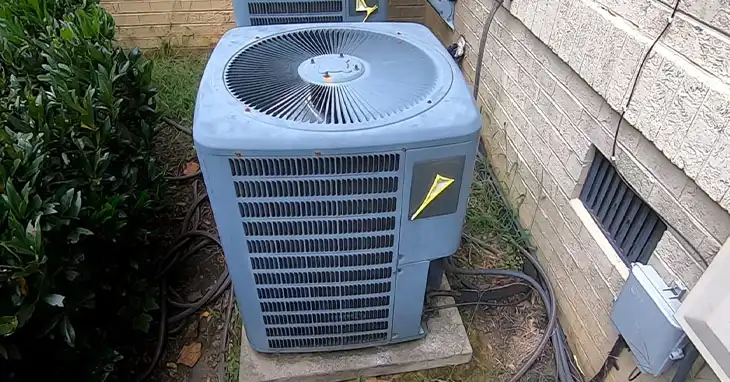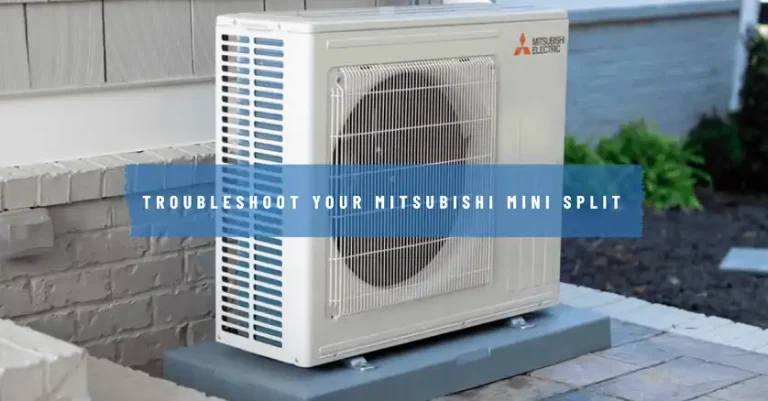What Refrigerant Can Be Mixed With R410A?
When it comes to HVAC systems, one of the most crucial questions is: can you mix different types of refrigerants? The short answer is no – you should never mix R410A with any other refrigerant, including R22.
R410A operates at significantly higher pressures than older refrigerants and has different chemical properties.
Mixing it with other refrigerants can cause serious damage to your HVAC system, reduce efficiency, and potentially create safety hazards.
This article will explore why mixing refrigerants is dangerous, what alternatives are available, and the proper procedures for handling different refrigerant types in HVAC systems.
Understanding these key points is essential for maintaining the safety, efficiency, and longevity of your heating and cooling equipment.
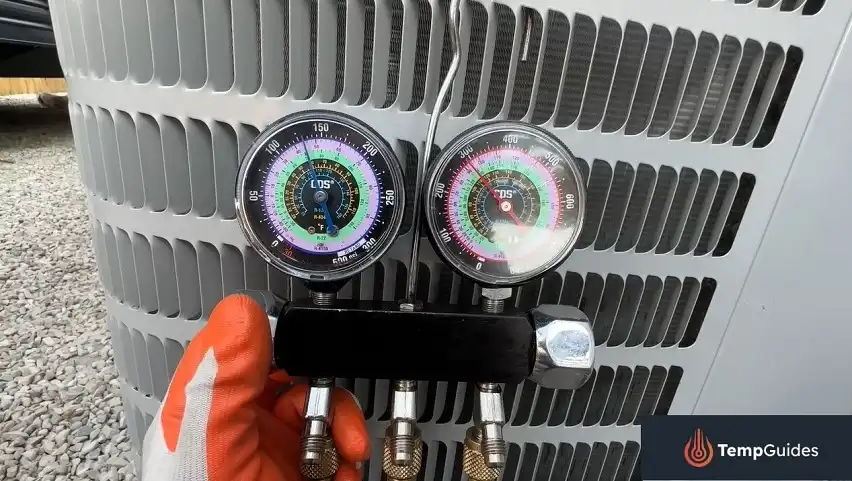
Can Refrigerant Be Mixed With R410A?
No. There are two main reasons why you can’t mix refrigerants with R410A (or any other type for that matter:
1. Incompatibility
R410A is a blend of two refrigerants itself, and its properties are designed to work with a specific pressure, temperature range, and lubricant oil.
Adding another refrigerant disrupts this delicate balance. Imagine mixing paints – you might end up with something unpredictable and unusable. Mixing refrigerants can:
Create harmful gases:
The interaction between different refrigerants is unknown, and it could lead to the formation of toxic or flammable gases. A leak from a system with mixed refrigerants could release these and pose a safety hazard.
Reduce efficiency:
The system won’t function as intended, leading to poor cooling performance and higher energy bills.
2. System Design
Air conditioning and refrigeration systems are designed and built to work with specific refrigerants. The components like compressors, coils, and valves are optimized for the pressure and temperature characteristics of that particular refrigerant. Mixing throws off these calculations:
Component damage:
Incompatible refrigerants can cause chemical reactions that damage the compressor, coils, and other parts of the system. This can lead to expensive repairs or even a complete system replacement.
Oil circulation problems:
Refrigerant oils are formulated to work with specific refrigerants for proper lubrication. Mixing can lead to oil circulation issues, ultimately damaging the compressor, the heart of the system.
R410A Overview
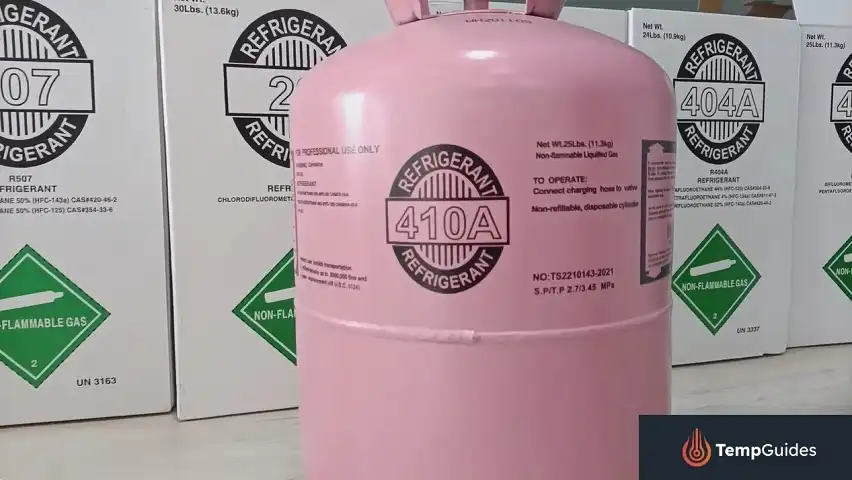
R410A is a hydrofluorocarbon (HFC) refrigerant blend that has become the standard in modern HVAC systems.
It was developed as a more environmentally friendly alternative to R22, which was phased out due to its ozone-depleting properties.
Properties
Key characteristics of R410A include:
Composition: R410A is a 50/50 mixture of difluoromethane (R32) and pentafluoroethane (R125).
Higher pressure operation: R410A operates at pressures about 60% higher than R22.
Improved energy efficiency: It offers better heat transfer capabilities, leading to more efficient cooling.
Zero ozone depletion potential: Unlike R22, R410A does not contribute to ozone layer depletion.
Lower toxicity: R410A is generally considered less toxic than some older refrigerants.
Usage in HVAC systems
R410A has become the go-to refrigerant for a wide range of residential and commercial HVAC applications:
Residential air conditioners: Most new home AC units use R410A.
Heat pumps: Both air-source and ground-source heat pumps often utilize R410A.
Mini-split systems: These increasingly popular ductless systems typically use R410A.
Commercial HVAC: Many larger commercial cooling systems have transitioned to R410A.
Chillers: Some water-cooled and air-cooled chillers now use R410A instead of other refrigerants.
Why Mixing Refrigerants is Dangerous?
There are a couple of reasons why mixing refrigerants is dangerous:
1. Different Pressures And Temperatures
One of the primary reasons mixing refrigerants is dangerous relates to the significant differences in operating pressures and temperatures:
Pressure incompatibility:
R410A operates at much higher pressures than R22 or other older refrigerants. Mixing them can lead to unpredictable and potentially dangerous pressure levels within the system.
Temperature glide:
Different refrigerants have varying temperature glides (the temperature change as the refrigerant evaporates or condenses). Mixing refrigerants can result in inconsistent cooling performance and reduced efficiency.
Compressor stress:
The compressor is designed to work with specific pressure ranges. Introducing mixed refrigerants can cause the compressor to work outside its design parameters, leading to premature failure.
Expansion valve issues:
The thermal expansion valve is calibrated for a specific refrigerant. Mixed refrigerants can cause improper metering of refrigerant flow, affecting system performance.
2. Potential System Damage
Introducing incompatible refrigerants into an HVAC system can cause severe and often irreparable damage:
Compressor burnout:
The heart of the HVAC system, the compressor, can fail due to improper lubrication or excessive pressures caused by mixed refrigerants.
Seal and gasket failures:
Different refrigerants interact differently with system seals and gaskets. Mixing can lead to degradation and leaks.
Clogged expansion valves:
Incompatible oil mixtures from different refrigerants can clog expansion valves, restricting refrigerant flow.
Corrosion:
Some refrigerant mixtures can become corrosive, damaging internal components of the HVAC system.
Reduced heat transfer:
Mixed refrigerants may not provide optimal heat transfer in the evaporator and condenser coils, reducing overall system efficiency.
3. Environmental Concerns
Mixing refrigerants not only affects system performance but also poses significant environmental risks:
Increased leak potential:
Pressure imbalances and material incompatibilities increase the likelihood of refrigerant leaks.
Difficult recovery and recycling:
Mixed refrigerants are challenging to properly recover and recycle, often requiring specialized equipment.
Ozone depletion:
If older ozone-depleting refrigerants are mixed with R410A, it compromises the environmental benefits of using the newer refrigerant.
Global warming potential:
Improper handling and increased leakage of refrigerants contribute to greenhouse gas emissions.
Regulatory non-compliance:
Mixing refrigerants often violates environmental regulations, potentially leading to fines and legal issues.
Alternatives to Mixing Refrigerants With R410A
Unfortunately, there are no safe alternatives to mixing refrigerants with R410A or any other type of refrigerant. Mixing refrigerants disrupts the designed balance within the system and can lead to the dangers mentioned previously.
Proper Refrigerant Recovery
Instead of mixing refrigerants, always follow these best practices:
Use EPA-approved recovery equipment:
Ensure all refrigerant recovery is done using certified equipment designed for the specific refrigerant in use.
Proper storage:
Store recovered refrigerants in appropriate, clearly labeled containers to prevent accidental mixing.
Recycle or reclaim:
Send recovered refrigerants to certified reclamation facilities for proper processing.
Recharge with pure refrigerant:
When recharging a system, always use the pure, correct refrigerant as specified by the manufacturer.
Keep accurate records:
Maintain detailed logs of all refrigerant recovery and charging activities for compliance and maintenance purposes.
System Retrofitting Or Replacement
For older systems using R22 or other phased-out refrigerants, consider these options:
Drop-in replacements:
Some approved alternatives can be used as drop-in replacements for R22 without major system modifications.
System retrofit:
In some cases, it’s possible to retrofit an existing system to use a different refrigerant, though this requires careful evaluation and often component replacement.
Full system upgrade:
Evaluate the cost-benefit of replacing the entire HVAC system with a new R410A unit, considering improved efficiency and long-term reliability.
Partial replacement:
In some cases, replacing only the outdoor unit while keeping the indoor coil might be a viable option, though this requires careful matching of components.
Professional assessment:
Always consult with a certified HVAC professional to determine the best course of action for your specific system and situation.
Legal and Safety Considerations
When dealing with refrigerants, it’s crucial to be aware of the legal and safety implications:
EPA regulations:
The Environmental Protection Agency regulates the handling and use of refrigerants. Intentional venting of refrigerants into the atmosphere is illegal and subject to hefty fines.
Technician certification:
Only EPA-certified technicians should handle refrigerants. This ensures proper handling and reduces the risk of accidental release or mixing.
Equipment warranties:
Mixing refrigerants or using the wrong type can void equipment warranties, potentially leading to costly repairs or replacements.
Safety standards:
Always follow manufacturer guidelines and local regulations regarding refrigerant handling and HVAC system maintenance.
Proper disposal:
Ensure that any refrigerant that cannot be reused is disposed of through EPA-approved recycling or destruction processes.
Final Words
In conclusion, mixing R410A with other refrigerants is never a recommended or safe practice. The potential risks far outweigh any perceived benefits.
Not only can it cause severe damage to your HVAC system, but it also poses significant environmental hazards and may violate legal regulations.
Always consult with certified HVAC professionals for any refrigerant-related issues. These experts have the knowledge, tools, and certifications to handle refrigerants safely and effectively.
They can provide guidance on the best options for your specific system, whether it’s proper recovery and recharging, system retrofitting, or full replacement.
FAQs
1. What Refrigerant Is Compatible With R410A?
RS-53 (R470A) is a compatible replacement for R410A. It is designed to work in systems originally intended for R410A. Always consult a professional to ensure compatibility and proper system function.
2. Can R410A Be Mixed With R134a?
No, R410A should never be mixed with R134a. Mixing these refrigerants can lead to system damage and inefficiency. The differing chemical properties can cause adverse reactions, leading to potential system failure.
3. What Can I Mix With R410A?
R410A should only be mixed with itself or R-22 in specific retrofit scenarios. Mixing it with other refrigerants can lead to inefficiency, potential damage, and safety hazards. Always consult a professional before mixing refrigerants.
4. What Happens If You Put R-22 In An R410A System?
If R-22 is put into an R410A system, the pressure can become dangerously high. This high pressure can cause parts of the system to rupture, leading to significant damage and potential safety hazards. It’s crucial to use the correct refrigerant.
5. What Freon Can I Use Instead Of R410A?
Forane® R-32 and R-454B are alternatives to R410A. These refrigerants are more environmentally friendly and can be used in systems designed for R410A. Always ensure system compatibility and consult with a professional before making a switch.
6. Can I Mix R410A With R32?
No, you should not try to retrofit R32 in an R410A system. Mixing these can lead to improper system function, increased pressure, and potential damage. Always use refrigerants as specified by the system manufacturer.

